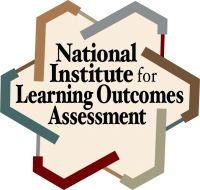Description
This assignment is intended to help students develop independent analytical skills with respect to written primary sources that are short and/or fragmentary, and to consider the way in which historical knowledge is produced. The assignment is scaffolded such that students prepare for the culminating essay through structured, collaborative activities designed to build their skills and understanding. Emphasis throughout is placed on source criticism.
Background and Context
Course Title: Early Medieval England.
Course Level: Upper Division course for Bachelor of Arts level in History.
Characteristics of Students: History Majors and non-History Majors. Most students, whether they are majors or non-majors come to the course material with little or no prior knowledge of the material as an academic field. The purpose of the targeted reading and comprehension questions is to ascertain that students come to the task equally prepared.
The assignment is intended to help students develop independent analytical skills with respect to written primary sources that are short (between 4 and 10 lines long) and/or fragmentary, and to consider the way in which historical knowledge is produced. Emphasis is placed on source criticism.
The written assignment is one of three (excluding exams) in the course. The assignment typically comes midway through the semester-long course. The assignment is scaffolded:
Part 1: Students prepare for the assignment by reading an informational chapter on slavery in Anglo-Saxon England. The students answer specific questions about the material they have read in the chapter in order to assess their comprehension of some key ideas and concepts. This chapter introduces them to vocabulary and concepts that are largely unfamiliar to them but pertinent to the exercise below.
Part 2: The second part introduces them to one or two manumission documents and I pattern the analysis in a collaborative, 50 minute class session.
Part 3: Students are provided with the written assignment in which they analyze a different manumission document.
This assignment probably best assesses DQP specialized knowledge in that it explains the principal terms in the field (terminology and cultural context), demonstrates fluency in the tools of the field through the ability to assess a primary source document, and constructs a summative paper that draws on current research and techniques in the field. It also assesses intellectual skills in that it differentiates and evaluates theories and approaches to complex standard and non-standard problems within his or her major field.
Reflections
The assignment is used to introduce students to the way historical knowledge is created. Students coming from the associate level are often very dependent on textbooks, or other synthetic sources. They believe that there is some form of pre-determined historical narrative that all sources fit into. This exercise introduces them to information that they cannot find in a textbook because there is no pre-exiting analysis of these documents at this level. The student is told that what we know about slavery in Anglo-Saxon England comes from the survival of such fragmentary documents. Provided it is supported by the document, and consistent with other documentation, their interpretation is valid.
Students come to realize that creativity and informed deduction can be part of creating our knowledge of the past. Problem areas are as follows: Historical deduction is not fantasy. Some students find the notion of informed deduction based on information from the text hard to distinguish from overblown imaginings that do not contribute to subject knowledge.
The assignment is an essay, so a number of factors contribute to the grade including how well and thoroughly the student extracts historical insights from the document (analysis), how well the student makes connections between those insights, how well the student incorporates information from the reading and how well the student communicates in writing. The university’s grading rubric differentiates: Excellent performance (A), Good performance (B) Standard performance (C) etc. And the AAC&U VALUE rubric for Written Communication (attached) provides a more nuanced tool for assessing the assignment’s intended learning outcomes.
This assignment is discipline-specific in its details. However, other fields have fragmentary or micro-documentation that must be assessed in the light of a broader historical or cultural context. The ability to deduce information from fragments is like cracking a code; it requires imagination, the ability to connect ideas, and to question a text down to a single word. Textual and historical analysis requires sensitivity to a different culture, and the ability to consider multiple aspects of the medium in which that information is communicated. Source criticism is an essential skill for research in the Humanities.

